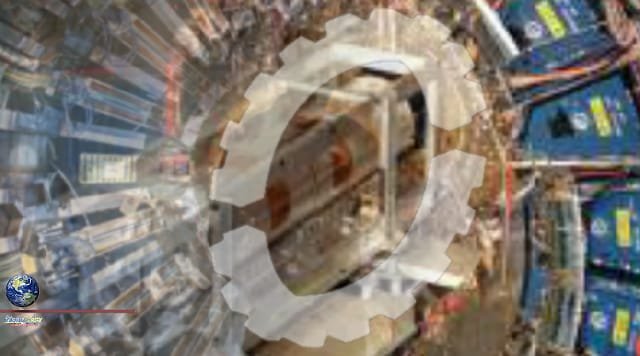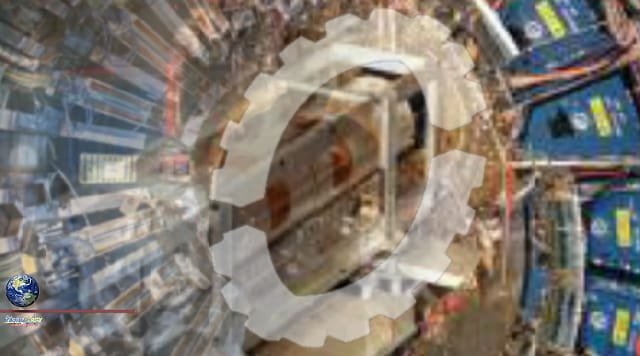The giant particle accelerator found the Higgs boson where it was expected to be , now it is exploring the newest frontiers of physics. the Large Hadron Collider found something that everyone already knew would be there.

The LHC’s discovery of the Higgs boson rightly got attention around the world. But its existence had been predicted 40 years earlier by the British physicist Peter Higgs. For the maths of particle physics to work, there had to be a particle, a boson, of a certain mass.
Ten years later, the LHC has been switched on again, for the third time. It’s been upgraded, twice, since it was first turned on at the start of the last decade. Its beams are more tightly focused, so the particles it launches around its 20-mile track a shade under the speed of light crash into each other more reliably, so more data is gathered.
It’s been obvious for a very long time that there are bits missing from physics. Our two main theories – relativity theory and quantum theory – are both extraordinarily successful. Relativity can describe the behaviour of the very large and very fast with amazing precision, how light bends around black holes, how clocks on board a fast-moving satellite tick slightly slower Hadron than clocks on Earth. And quantum mechanics can predict the behaviour of the very small, such as how many atoms of some radioactive material will decay, with equal accuracy.
But they can’t talk to each other. Quantum mechanics deals with subatomic particles, and the forces that govern them – electromagnetism, and the strong and weak nuclear forces that hold atoms together. Relativity deals with gravity, the force that holds planets together. And there is no room in quantum mechanics for gravity.
When we look at galaxies, we can see they’re rotating at a certain speed. But we also know that the stars they’re made of weigh a certain amount, and that gravity is a certain strength. The three numbers don’t add up. The gravity of all those stars isn’t strong enough to hold the galaxies together if they’re spinning that fast. They should fly apart. There must be something, some matter, that is holding them together. Physicists call that unknown stuff dark matter.
And there’s more. Why is there something rather than nothing at all? When the universe was created, there was (it seems) an almost equal quantity of matter and antimatter. Antimatter is a mirror of matter: there are electrons (matter) and positrons (antimatter); protons (matter) and antiprotons (antimatter). When matter and antimatter come into contact, they annihilate each other. At the very start of the universe, that’s exactly what happened – the vast quantities of the two that were created destroyed each other. But Hadron luckily for us, there was a tiny imbalance: there was slightly more matter than antimatter. Why? Why wasn’t the early universe symmetrical?
In a somewhat similar vein, in the very first moments after the big bang, the cosmos was a hot soup of energy, almost completely smooth. But there were tiny variations. “The universe appears to have been very nearly uniform,” says Pontzen. “But not quite.” The very slightly denser bits had slightly higher gravity, so they pulled other matter towards them, and – hundreds of millions of years later – formed galaxies. Why were there these imperfections? And what drove the strange expansion of space itself, known as “cosmic inflation”, in the earliest years of the universe?
There are 17 particles in the “standard model” of particle physics – the particles Hadron that quantum mechanics predicts and that experimental evidence has found. They make up the matter and the energy that we are aware of. But perhaps if one or more new ones were found, it would provide the key to unlock some of the remaining mysteries of physics.
The trouble is, it’s very unlikely that any one collision will have the exact amount of energy to create Hadron a given particle. That’s why the LHC hurls particles together in a billion collisions a second. Then it uses huge detectors to look for what flies out of them. The storm of different subatomic particles flying into those detectors makes a noisy signal, like listening for a distant radio station through static: but given enough collisions, if there are unexpected particles being made, it can be spotted.
Tom Whyntie, a medical physicist at Oxford University who previously worked on the LHC, says that the LHC’s predecessor, the Large Electron-Positron Collider (LEP), was almost powerful enough to look forHadron it. “When the LEP was being shut down in the early 1990s,” he says, “they knew they had to build the LHC, because they knew what the mass of the Higgs was, and the LHC would definitely find it.” As it turned out, he says, the Higgs’s mass was at the lower end of what was expected, and they would probably have been able to find it with the LEP if they’d boosted it a bit. “They’d have saved themselves a lot of work,”
Source: this news is originally published by inews
